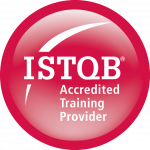Test Automation
Establishing the essential elements of test automation and approaches that organisations can take to make this approach more successful
Join a public online course, or study at your own pace with Distance Learning.
Course Booking Form
Distance Learning
Bespoke delivery at your workplace or online
Course Booking Form
Course Objectives
By the end of the course, you will understand the common problems encountered in test execution automation. You will have outlined a strategy for successfully managing test execution automation from inception through to maturity. You will understand the basics of good technical approaches that provide the foundations for lasting benefits.
Who will benefit?
This course is suitable for anyone with an interest in test execution automation. If you are about to acquire or begin using a test execution tool, this course will help you start off in the right way. If you have had a test execution tool for a while but have been disappointed with the results achieved or with the costs of testware maintenance, this course will help put you back on the right track.
Skills gained
- ability to assess test automation maturity
- be able to distinguish between good and unrealistic objectives for test automation
- determine appropriate measures for test
- automation
- understand role and responsibility differences between testers and test automators
- understand the benefits and pitfalls of different scripting techniques
- understand the need for a common testware architecture
- recognise the difference between automated tests and automated testing
- distinguish when and how to use different comparison techniques
- understand what to automate and what not to automate
Prerequisites
While no prior experience is necessary, it is assumed that participants are familiar with the principles of test execution automation at a basic level. For example, they already understand why a simple capture/replay approach alone does not lead to long term success.
Course Content
Planning and managing test automation
Achieving good test automation is a journey rather than a destination. Where are you on your current journey? Take the self-assessment test to see what further progress you can make. This session looks at how and what to explore on your journey in order to achieve the best results for your organisation including automation objectives, roles and responsibilities, and measurement of automation costs and benefits.
Scripting techniques
Scripting is often the backbone of test automation. Pros and cons of different scripting techniques are explored with particular emphasis on keyworddriven approaches. The more sophisticated scripting methods are not difficult to implement but are key to increased productivity in test automation. Higher level scripting techniques can minimise maintenance and can allow independence from the tool in use.
Testware architecture
Knowing where to put things is just as important as knowing where to find them. Having a well organised scheme for storing all the testware artefacts that accumulate, typically in the thousands, is a must for high productivity with test automation. This session considers the main issues that must be addressed and outlines a basic approach that can be tailored to suit specific organisational needs.
Pre and post processing
Automating individual test cases is one thing, automating testing is another! The difference between these two things is explained and an approach to bridging the gap is covered.
Comparison techniques
Automated test execution is of little use without automated comparison of test results. In this session we will look at different ways of comparing (dynamic and post-execution) and ways to implement each. Test sensitivity is an important consideration in automated comparison.
Testware maintenance
Maintenance of automated tests has proven to be the downfall of many test automation efforts. This session describes the most common problems and suggests ways in which maintenance effort can be minimised.



